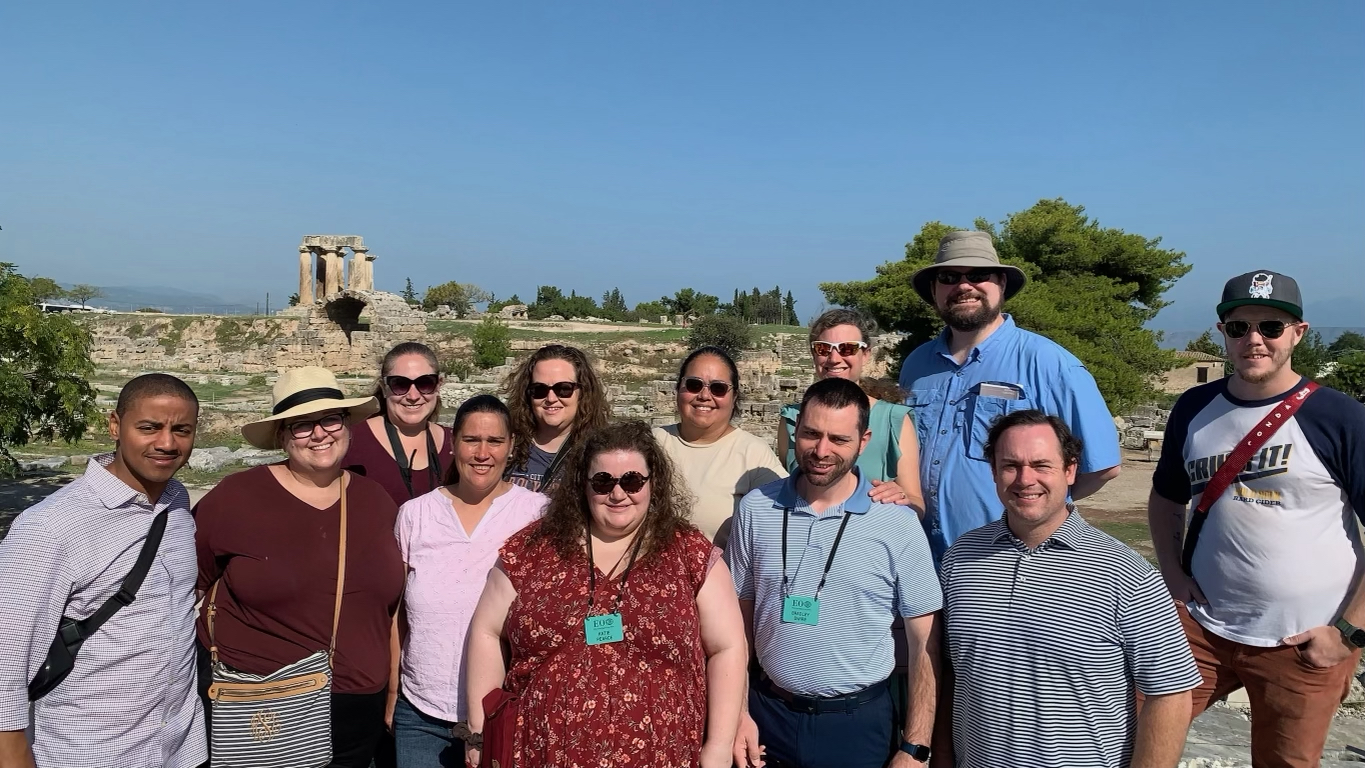
Seeking the Traveling Apostle
Story and Photos by Rev. Trey Comstock
Join The Rev. Trey Comstock as he describes his APL cohort’s October trip to visit the spaces travelled by the apostle Paul.
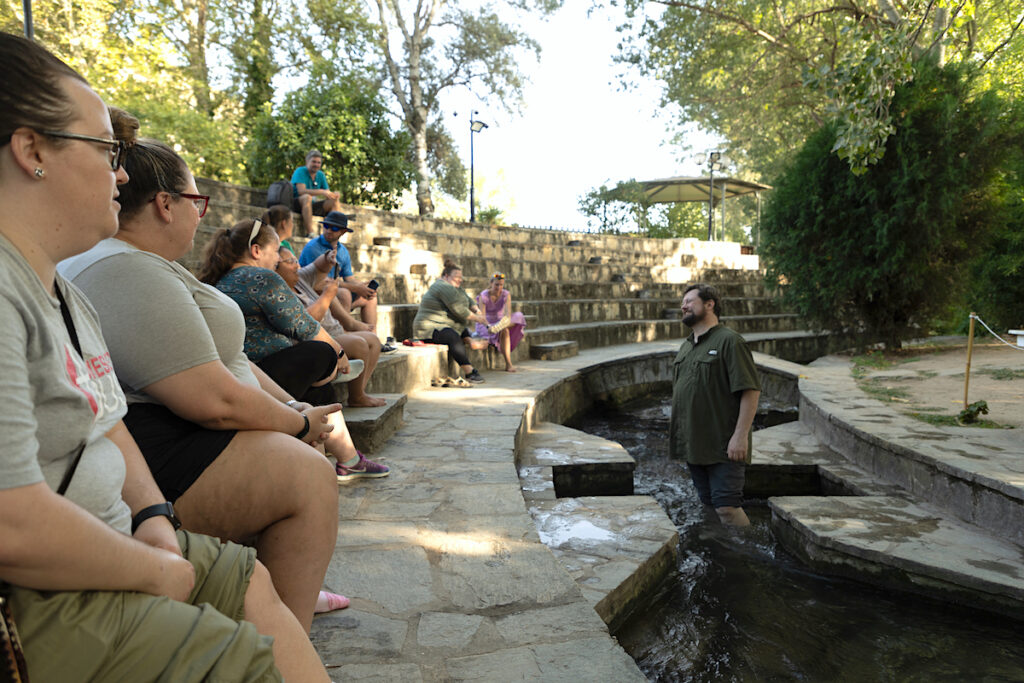
How can we connect with and wrap our heads around Paul’s life and ministry? Distance, time, and culture all separate us from his reality. He lived in a far away place and an even further away time and with challenges that we can’t imagine, we live with conveniences that would boggle his mind. To attempt to bridge this gap, my Advancing Pastoral Leadership (APL) cohort, including myself, Raegan Seaton, Andrew Wolfe, and Erin Muckelroy from our Conference as well as folks with North Texas, Central Texas, Rio Texas, Arkansas, and Louisiana, set out on an eleven-day journey across Greece and Turkey as the capstone of our APL experience. We boarded seven different flights, stayed in six different hotels, and spent two whole days on a bus road tripping across central Turkey. Our travels took us in a somewhat reverse order to how Paul’s missionary journeys took him. We went, Corinth, to Athens, to Thessalonica, to Philippi, to Laodicea, to Colossae, to Ephesus.
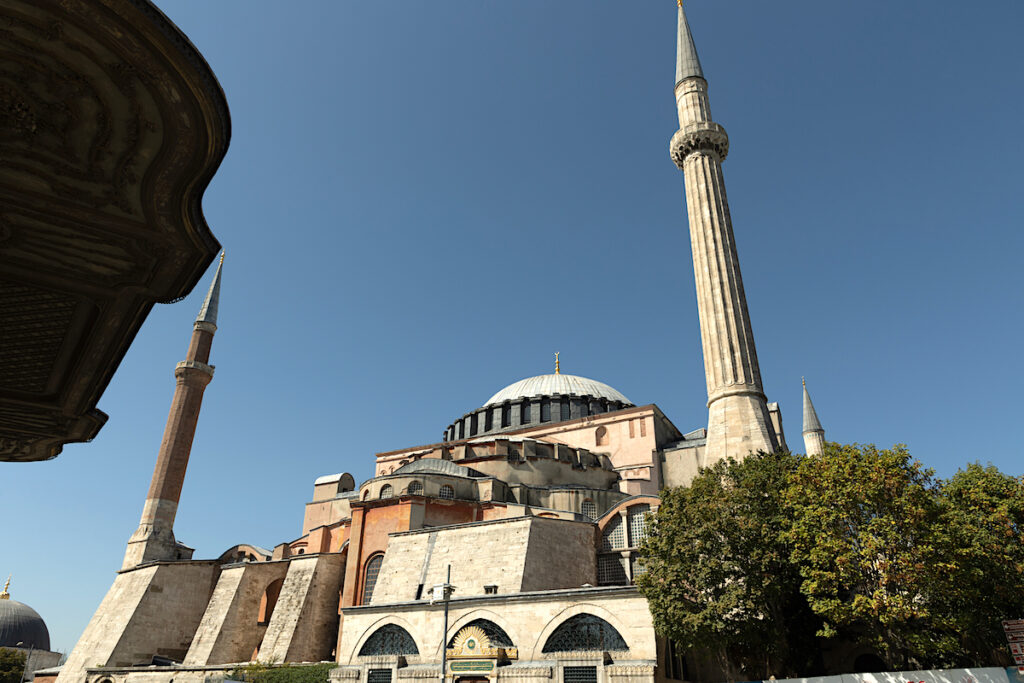
For me, it helped to stand where he stood. Maybe, I’m alone in this, but Bible stories can take on the feeling of “Once Upon a Time” or “A long time ago, in a galaxy far, far away.” Spending huge chunks of time in the archaeological sites of Corinth, Athens, Philippi, Laodicea, Hierapolis, and Ephesus grounded me and put the Biblical story into coherent space.
When Paul goes before the regional governor, in Corinth, as reported in Acts 18, we know, archeologically, where the governor’s official seat of judgement is. We stood on top of it, where the governor would have stood. We stood below, where Paul would have stood.
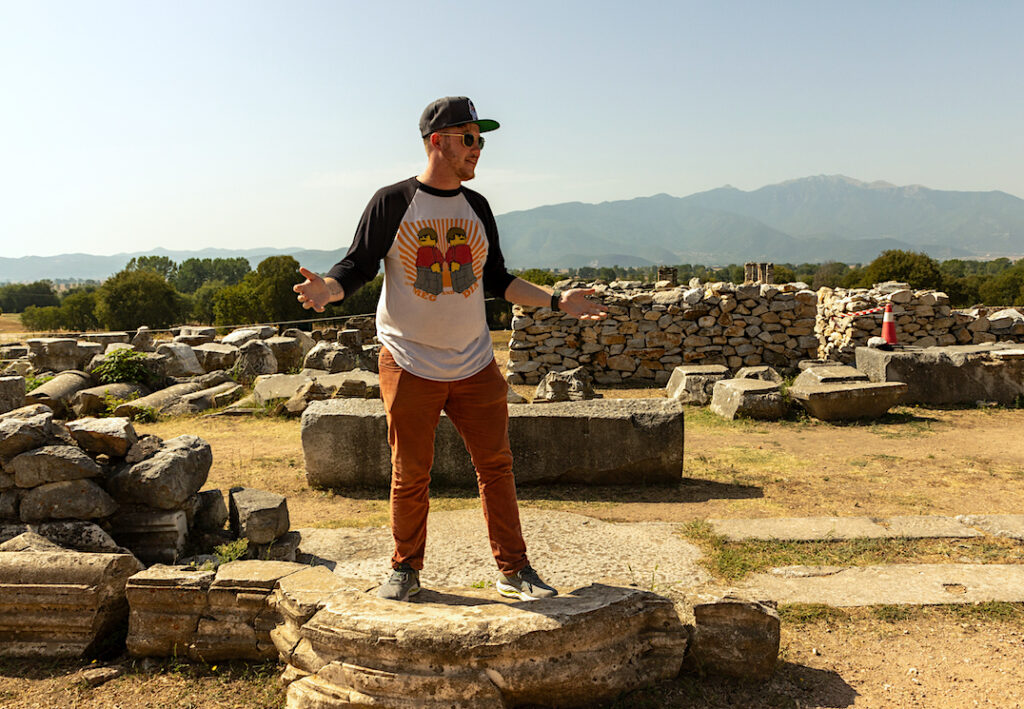
In Philippi, we know where the merchant stalls were in the city marketplace. Their structures remain visible. So, while we don’t know which stall belonged to Lydia, the merchant of purple dye baptized in Acts 16, we can know that Paul and her connected somewhere within that small and identifiable patch of the city.

In Ephesus, the archaeological site includes the 25,000 seat theater that has been carefully restored using its original stones. You can (and I did) stand on its stage and hear the amazing acoustics of a Greco-Roman theater. You can then also clearly see the scene from Acts 19, where the crowd of thousands of artisans put out by Paul’s missionary work shout, from the same theater seats, “Great is Artemis of the Ephesians.” You can also see that the city marketplace is just out the theater, and easily imagine that’s where Paul stood, wanting to enter the theater only to be warned by some sympathetic Romans, “I know that you want to go in there, but it’s not a good idea.” Even as ruins, these cities of the New Testament became not just real places but a more tangible entry into our APL story.
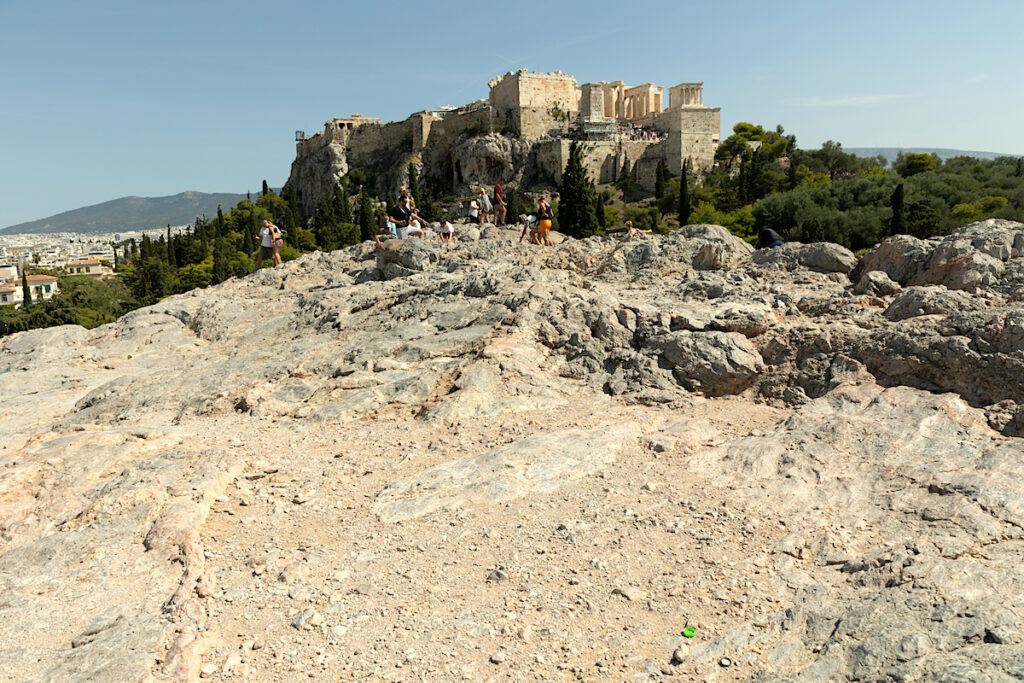
Beyond the sights, living out this journey as a frenetic road trip through the landscape opened up another way to connect with Paul. He didn’t have airplanes and tour buses, but he earned his reputation as an apostle because he hit the road – in constant motion. He risked his life not only by facing hostile opponents but by covering hundreds of miles of territory full of hazards, discomforts, and bandits. Living in our own state of perpetual movement, following some of the same routes, seeing the same seas, mountains, and valleys, and dealing with our own versions of the rigors of the road (no bandits, just constant packing, living out of suitcases, flight delays, and a few bumps and bruises) also allowed us to comprehend Paul more. Paul did it for years. We did it for days. Still as our bus carved its way through the valleys leading from Laodicea to Ephesus, a journey that we know Paul took, you can almost picture him and his companions walking through the grass and among the trees.
Advancing Pastoral Leadership (APL) is a ministry of the Texas Annual Conference through the Emerging Leaders Endowment and is designed to develop the capacity for strategic congregational leadership by United Methodist pastors. Created out of a deep concern for the mission of the church to make disciples of Jesus Christ for the transformation of the world, the goal of the program is to assist emerging clergy leaders in developing their capacity for fruitful leadership. With this program, clergy who have 30 years of potential remaining service to the church have the opportunity to develop their capacity for leadership. Nowhere else in the country do United Methodist clergy have an equivalent opportunity both to serve important missional appointments and be guided in an intentional, long-term process of leadership formation and development.
Learn more at: www.txcumc.org/leadership-formation/leadership-spiritual-development/advancing-pastoral-leadership
